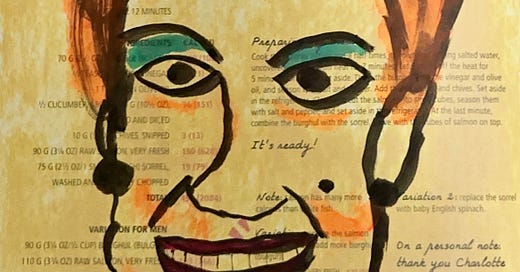In the heart of a rapidly evolving society, where the values of inclusivity and progress clash with the echoes of an outdated past, “hanson I con” emerges as a bold statement on the complexities of identity and societal perception.
This piece is an artistic exploration of Pauline Hanson, a figure who has managed to polarise the Australian political landscape since her rise to fame in the early '90s.
Drawing inspiration from Andy Warhol's iconic depiction of Marilyn Monroe, this artwork juxtaposes the glamorous allure of celebrity with the harsh reality of a political persona that thrives on division and nostalgia.
Unlike Monroe's beauty, Pauline's representation in this piece serves as a stark reminder of the ways in which public figures can distort their image to manipulate the sentiments of their audience. The vibrant orange hair, a signature of her persona, symbolises both her attempt to stand out and the artificiality of her public image.
The poor application of makeup and the exaggerated beauty mark speak to the façade that many politicians like Hanson project—a superficial charm that masks underlying prejudices and opportunism.
The fake jewelry and toothy grin highlight her insatiable appetite for attention and resources, as she continues to draw from the public purse while promoting a narrow-minded agenda.
Crafted on a recycled TV program page, the background of this piece serves as a poignant reminder of the media's role in shaping public perceptions. The fish and chip store preview, a nod to working-class values, is emblematic of how Hanson has often positioned herself as a champion for the common man, even as her policies alienate the very people she claims to support.
Through “hanson I con,” I invite viewers to reflect on the complexities of identity and the narratives we construct around public figures.
This artwork is not merely a critique but a celebration of the vibrant and unapologetic spirit of those who challenge the status quo.
In a world that often feels fragmented, this piece calls for a re-examination of our values and the leaders we choose to follow—reminding us that true icons should uplift and unite, rather than divide.




